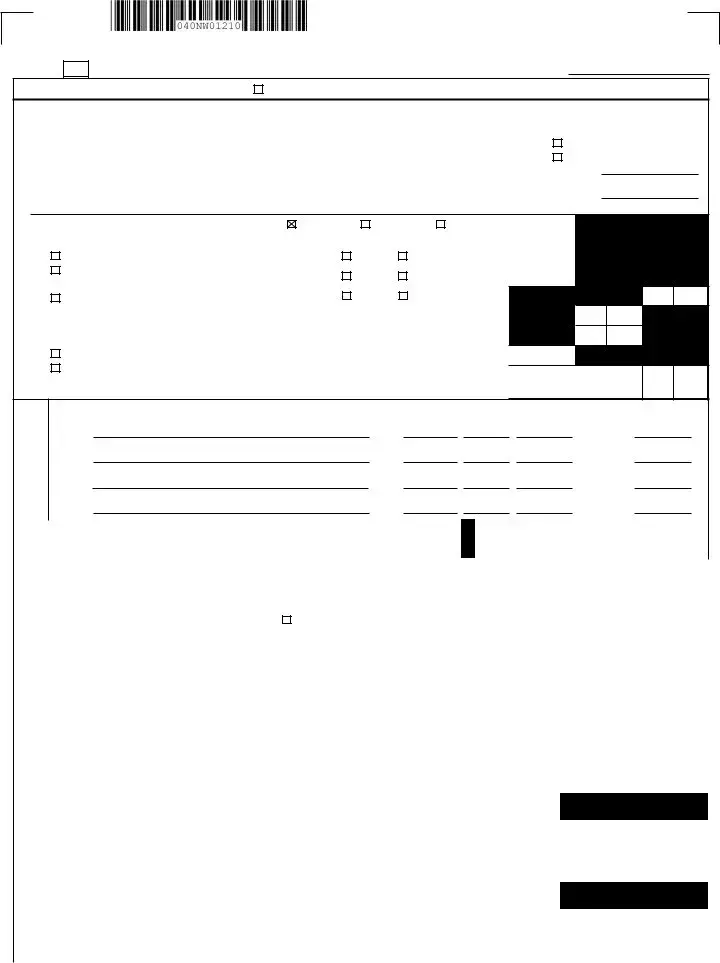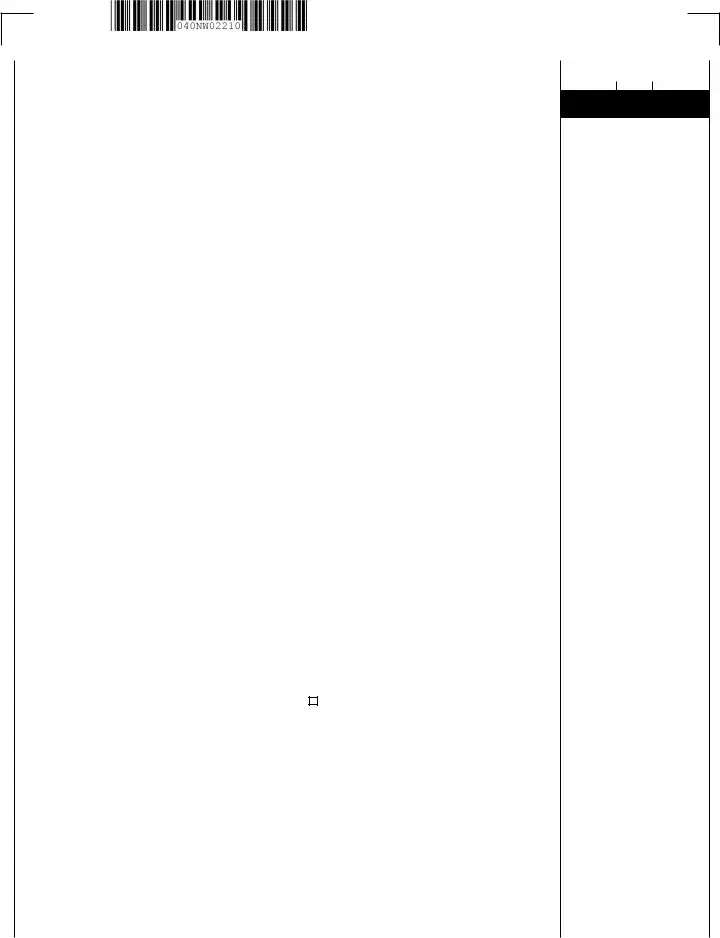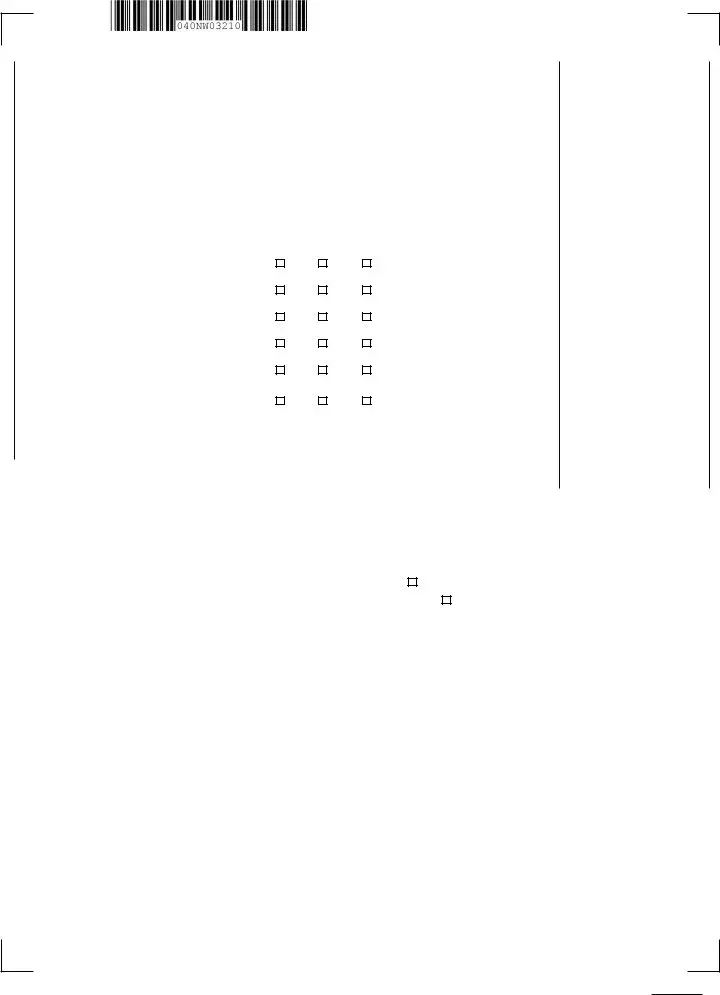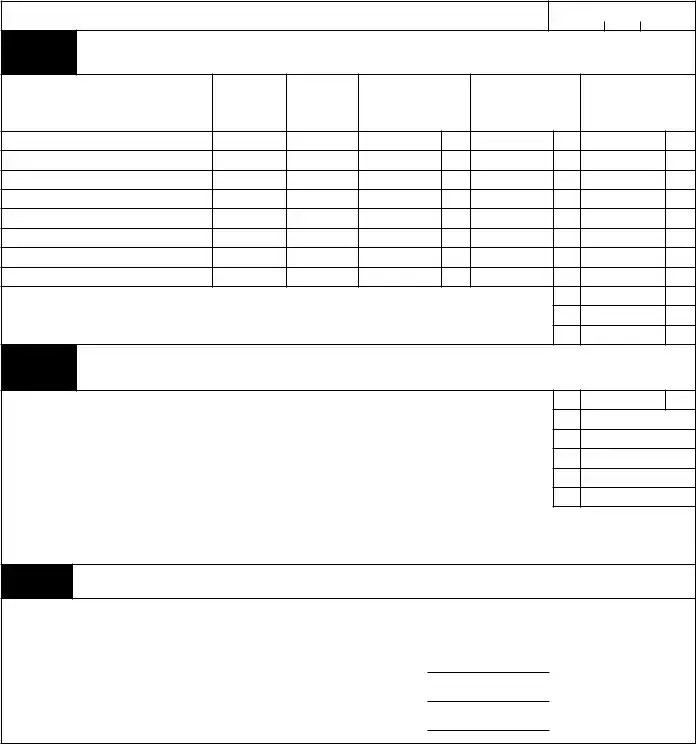The Form NJ-1040 is a document that closely relates to the NJ-1040NR, focusing primarily on the tax responsibilities for New Jersey residents. While the NJ-1040NR caters to nonresidents, the NJ-1040 includes similar sections such as income reporting, deductions, and credits, but tailored for residents who have spent the entire year within New Jersey. Both forms delve into the complexities of tax calculations, exemptions, and potential credits, while also considering various income sources including wages, interest, and dividends. Moreover, residents, like nonresidents, are required to report specific financial details, though the relevance to state residency differs.
The 1040 U.S. Individual Income Tax Return shares foundational similarities with the NJ-1040NR, as it encompasses the federal tax obligations of individuals. This document is comprehensive, covering areas like income, tax deductions, credits, and taxes due to the federal government. The principle of operation between the federal 1040 and the NJ-1040NR is analogous; both documents are essential for calculating the respective taxes owed but on different governmental levels. They also inquire about personal information, financial earnings, and allow for adjustments based on family size, educational expenses, and charitable contributions.
The IT-203 Nonresident and Part-Year Resident Income Tax Return form is New York's counterpart to New Jersey's NJ-1040NR, serving nonresidents and part-year residents who earned income in the state. This document, much like the NJ-1040NR, segregates income into various categories, necessitating detailed disclosures of earnings, such as wages and dividends, stemming from sources within the state. Both forms play a critical role in ensuring that individuals fulfill their tax obligations in states where they've generated income without establishing residency, maintaining equitable taxation across state lines.
The California Nonresident or Part-Year Resident Income Tax Return (Form 540NR) also parallels the NJ-1040NR form. Similar to its New Jersey counterpart, the 540NR is designed for individuals who either lived outside California for part of the year or did not reside in the state at all, yet earned income from California sources. Both states require nonresidents to report their incomes, apply deductions specific to their situations, and calculate the tax based on the portion of their earnings attributable to state sources, reflecting the states' desires to tax income generated within their borders.
Form PA-40, the Pennsylvania Income Tax Return, is structured to capture similar kinds of information as the NJ-1040NR for Pennsylvania residents. It too breaks down income into various categories, allows for deductions and credits, and addresses tax liability within the state. Although one is for residents while the other is for nonresidents, each form plays a pivotal role in state-level taxation, ensuring that individuals pay taxes on income earned within the state, including wages, interest, and dividends.
Form IL-1040, the Illinois Individual Income Tax Return, while primarily for Illinois residents, shares the approach of dissecting an individual's income, deductions, and credits to ascertain tax liability, akin to what's seen in the NJ-1040NR. It exemplifies a state's effort to tax income earned within its boundaries, whether by residents or nonresidents, paralleling the comprehensive way in which New Jersey's form manages tax responsibilities for nonresidents and part-year residents. This similarity underscores the uniform need among states to thoroughly capture and tax income generated within their locales.
The Massachusetts Nonresident/Part-Year Resident Tax Return (Form 1-NR/PY) is specifically formulated for individuals not fully residing in Massachusetts but who have earned income from the state, making it another document akin to the NJ-1040NR. This form requires detailed income reporting, adjustments based on various factors similar to those in New Jersey's nonresident return, and calculation of taxes owed from Massachusetts-sourced income. Such forms ensure that nonresidents contribute their fair share to the state coffers, based on the economic activities conducted within the state boundaries.



